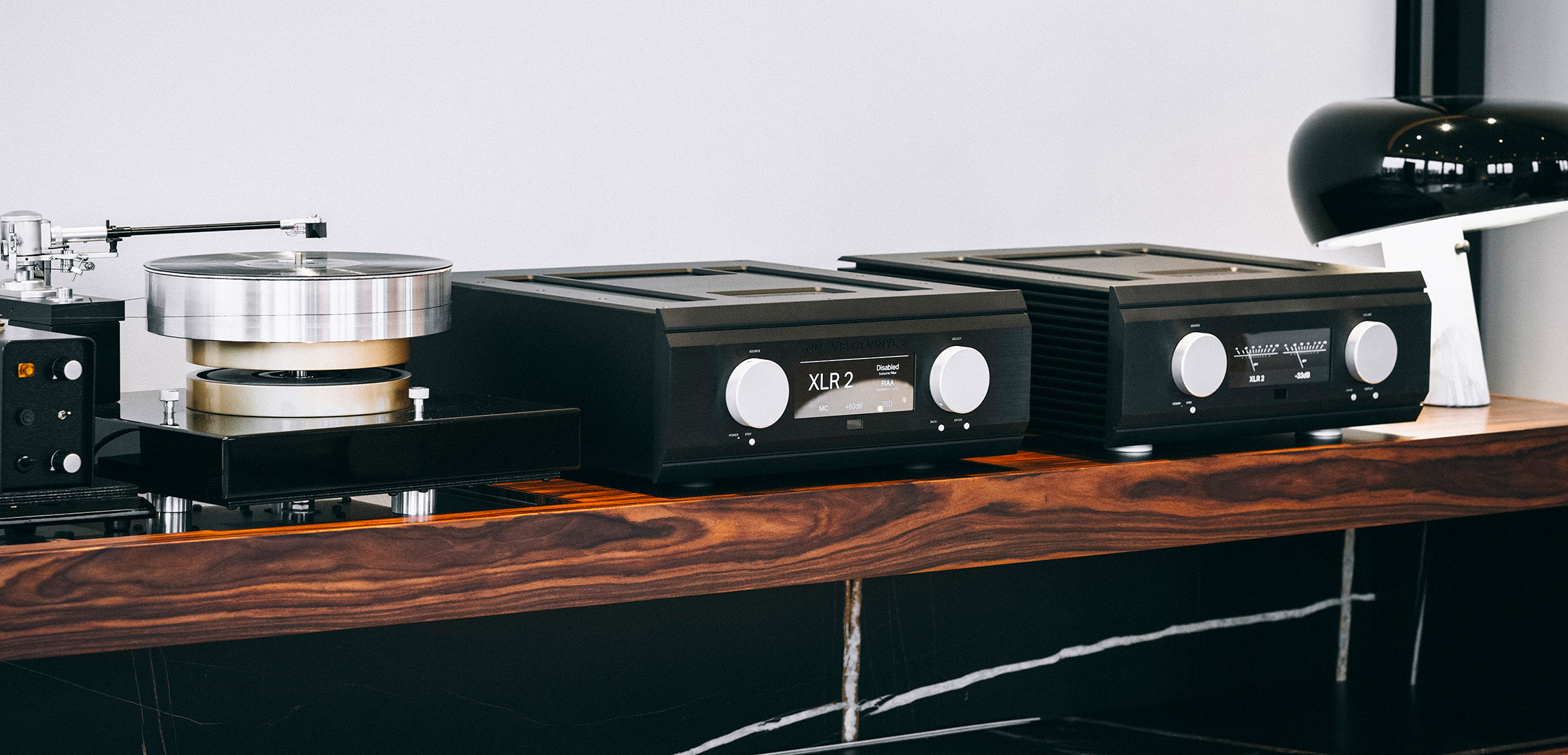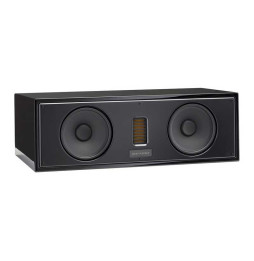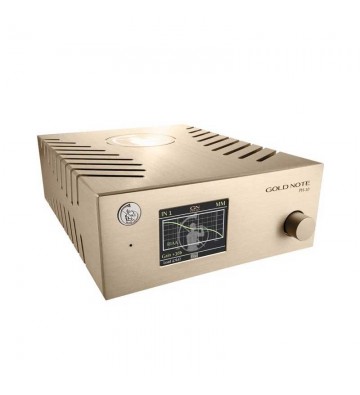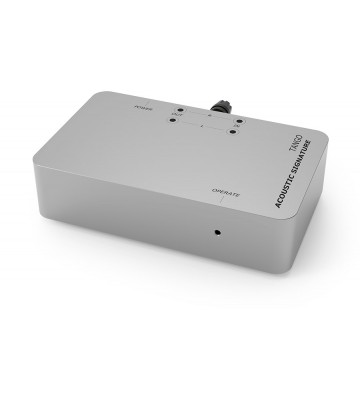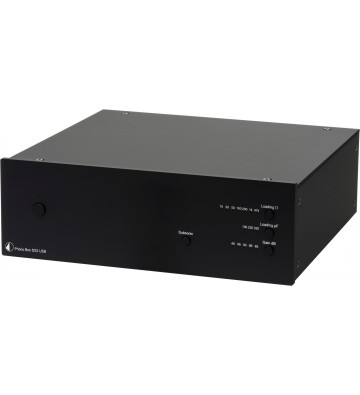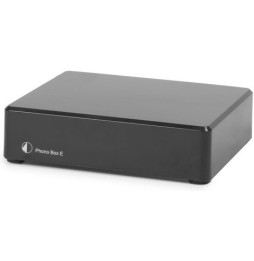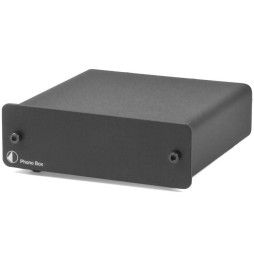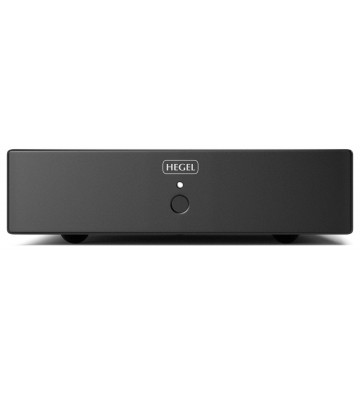The Nu-Vista Vinyl 2 is the new flagship of Musical Fidelity phono preamplifiers, an ultra-high performance, highly accurate phono MM/MC phono preamplifier with a discrete Class A Nuvistor tube stage. Beautifully designed and executed with massive casework, we set out to make a phono stage without any practical limits. It’s designed in such a way to ensure you cannot overload the input stage or encounter any practical limitations in the output driving capacity. Its purpose is singular, to be a conduit for music. It exists to faithfully convey the artist‘s intent, their emotions, the passion directly to your ears and heart.

Technical Talk
Compared to its predecessor, the Nu-Vista Vinyl, the Vinyl 2 now features discrete and fully balanced audio circuitry on the inside. The phono pre-amplification contains three gain stages powered by fully Class A discrete transistor circuitry. The EQ stage doesn’t cut any corners either. Completely passive and in two separate stages (split-passive) - this is more costly to design and implement but ensures the most accurate representation of the ideal EQ curve. Split passive equalization allows for better impedance matching and lower deviation from the ideal EQ. In addition to the standard RIAA curve, we have implemented the two less common DECCA and COLOMBIA curves as well. The audio signals from the phono preamplifier go to a separate board for each channel, with a fully balanced discrete class A Nuvistor stage. The clean PCB layout and purpose driven design guarantee lowest possible noise and distortion with low output impedance. RCA and XLR outputs both have their own individual stages allowing you to use them simultaneously. The Nu-Vista Vinyl 2 uses the same display technology and redesigned front panel as all other recent Nu-Vista additions.
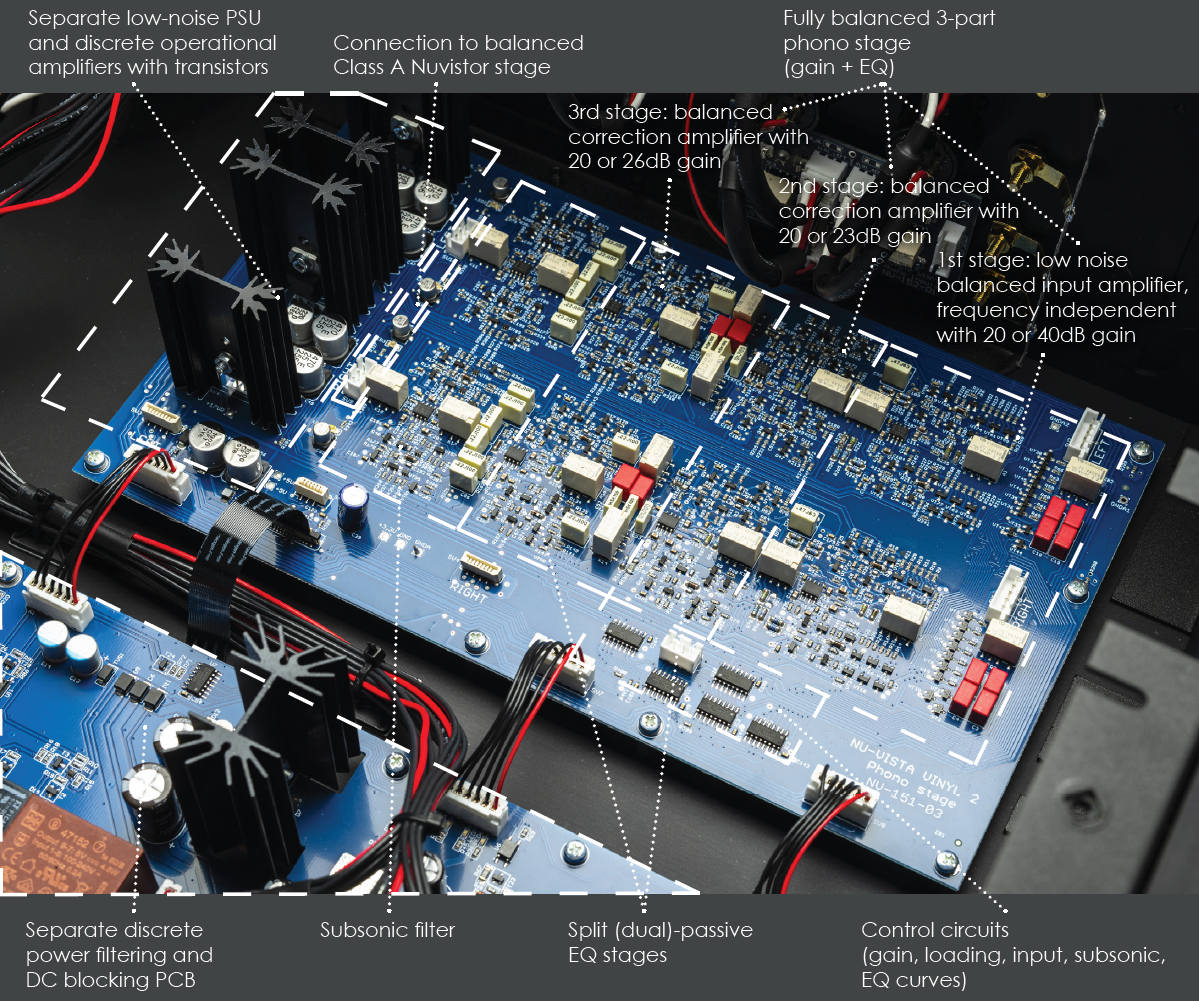
The Advantage of Discrete Circuits
A discrete circuit is composed of electronic components which are disparate, individual devices, also called discrete components. These can be “passive” components, like resistors, capacitors and inductors, as well as “active” components like transistors. The opposite to this would be an integrated circuit (IC = chip), which can, for example, be used as an operational amplifier (Op-Amp) in the signal chain.
In our industry we employ specialised IC Op-Amps built for audio applications, which allow us to produce very small and efficient electronics, as well as saving the time of design engineers. However, countless hours of listening tests and years of experience have shown us that even the very best ICs do not tend to be so neutral, natural, dynamic or vivid – all of which are characteristics of the Musical Fidelity “sound”. They are also difficult - if not impossible - to repair. For that reason, we’re rediscovering our passion for traditional, discrete designs.
Where standard phono pre-amplifiers with integrated circuits have a few tens or hundreds of components, discrete designs will employ hundreds or thousands of components by comparison. That makes for an extended design process, but in our opinion results in the best sound for your money.
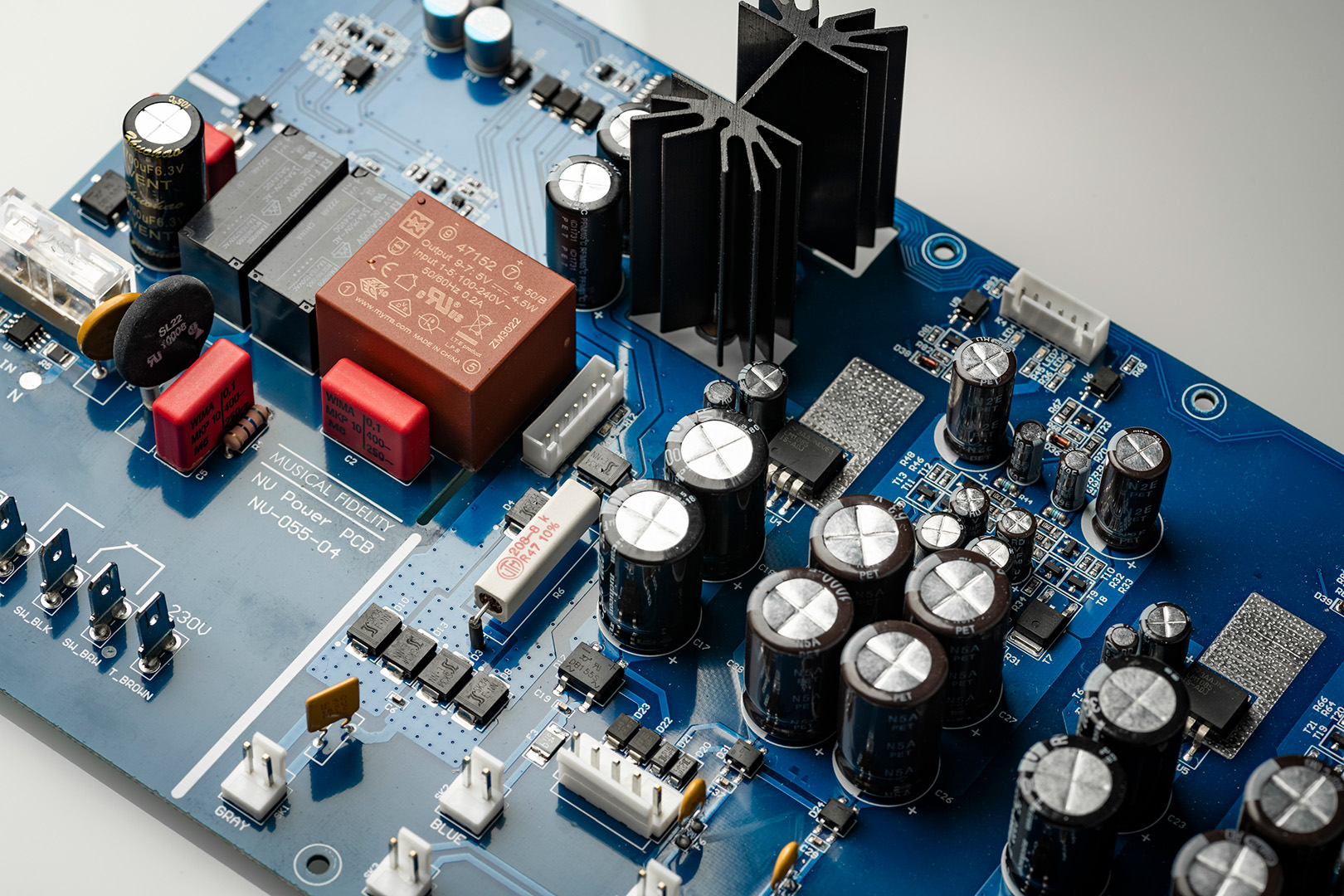
Fully Balanced
A fully balanced design principle, as used in the Nu-Vista Vinyl 2, consists of a hot and a cold (also called + and -) signal. Both the + and – signal chains effectively carry the same musical information. A true balanced amplifier can now extract the final musical information out the +/- signals and subtract, remove, all noise that could potentially be added along the transmission.
A “pseudo-balanced” amplifier will not process the + and – signals independently, but add them together before they are processed. Pseudo-balanced design will not benefit from the advantages that balanced connections have to offer, like fully balanced amplifiers do. In a true, fully balanced device, the + and – sections of both the left and right channel are treated individually, which doubles the amplifier sections by 2 as a result. You need twice as much space on the circuit board, twice as many electrical components and be twice as careful with planning your circuit board layout. As a result, the Nu-Vista Vinyl 2 excels at suppressing unwanted noise, errors and interferences and offers the best signal to noise ratio possible.
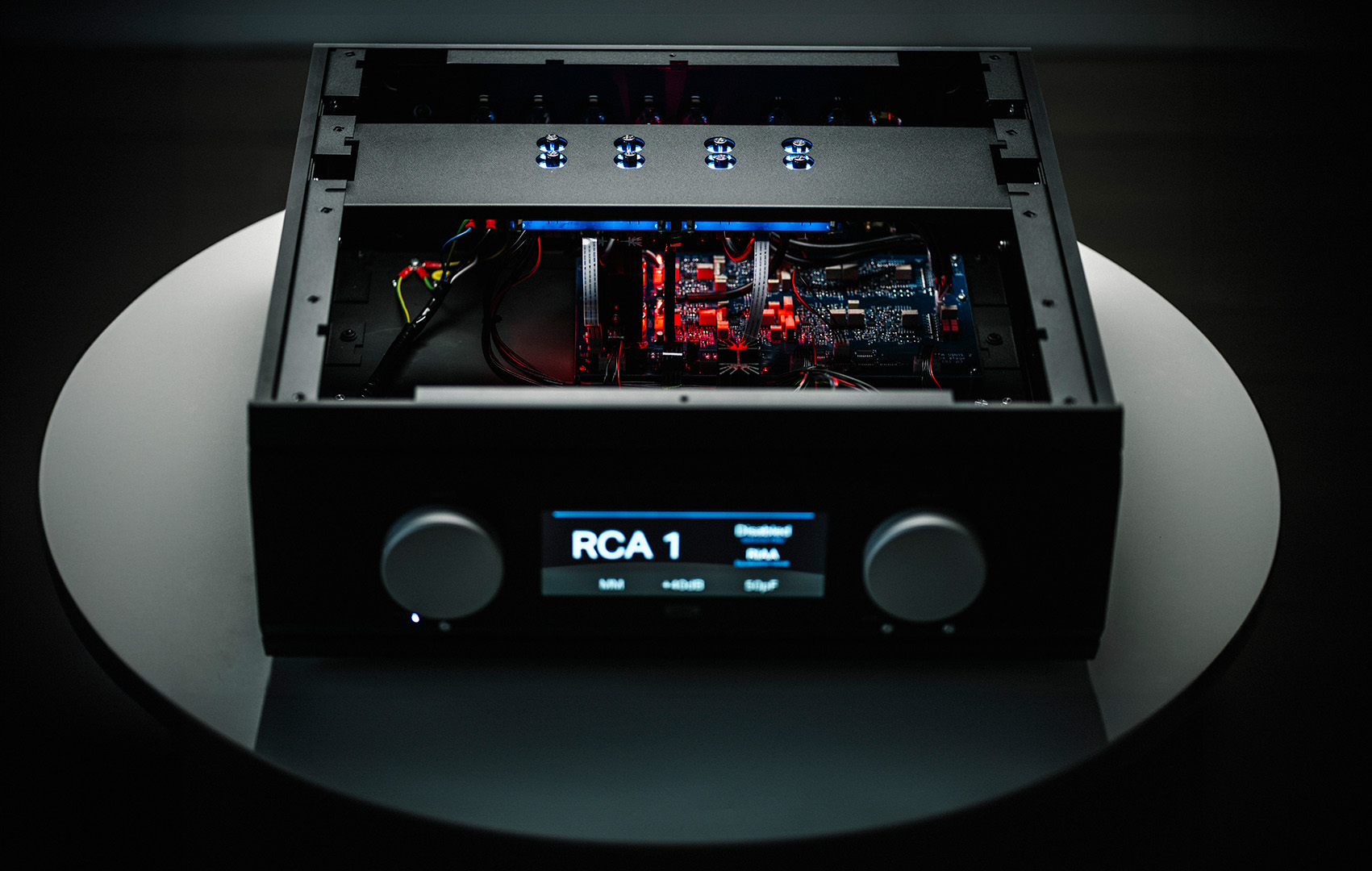
Extreme Cartridge Loading Options
Each of its single-ended RCA or balanced XLR inputs can be individually set for either MM/MC and loading. Each input also then remembers its own settings.
Very large ranges from 40dB (voltage amplification by 100x) up to 69dB (voltage amplification by 3690x) are possible. The gain is cleanly switched using signal relays and you can see the big increase in amplification is why a phono preamp must be incredibly silent (a fully balanced design makes a big difference here) to handle amplification levels this high. Input capacitance and impedance are switched by using JFET transistors.
A costly, yet technically extremely sophisticated implementation, it allows the Nu-Vista Vinyl 2 to be matched with any cartridges and perfectly integrated it into the rest of your Hifi system.
By that criteria the Nu-Vista Vinyl 2 is perfect. It has no practical audible noise even at the highest levels of amplification. It doesn‘t really have distortion. You cannot overload its input or output and you can load your cartridge perfectly. It brings the artist’s intent, emotions and passion to your ears and heart.
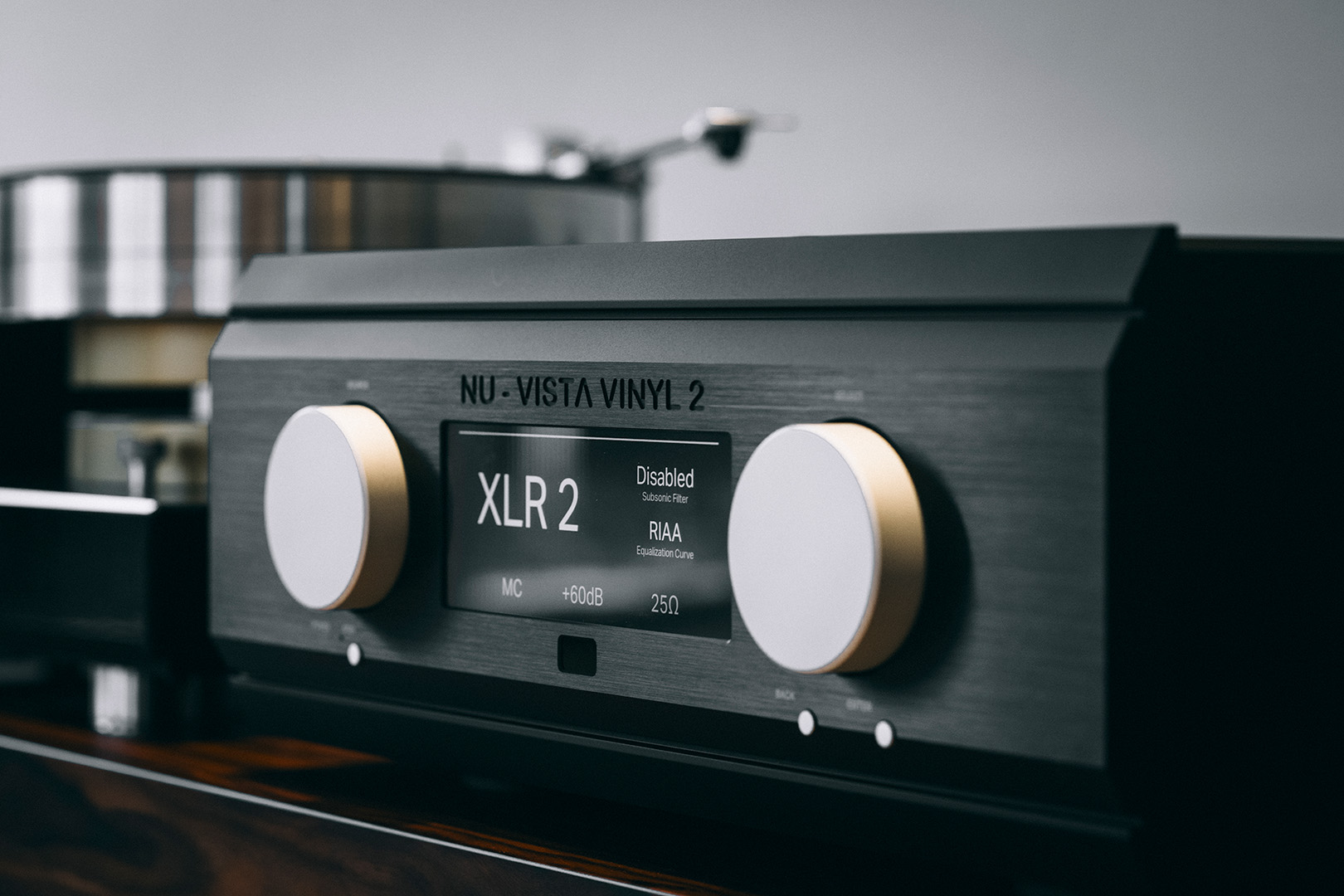
Power supply
The Nu-Vista Vinyl 2 displays our continued development of our Super Silent Power Transformers. Industrial grade power sockets with EMI filter and DC blocker stop interferences and eliminate transformer hum. The encapsulated toroidal transformer is purpose designed for delicate phono signals with low core saturation and extremely low electromagnetic radiation. Each discrete amp stage has a DC servo ensuring optimal DC mode. The preamplifier is powered by two high-quality symmetrical low-noise power supplies, one for each channel. All the fully balanced Nuvistor PSUs are passively filtered and regulated. If we are working with the few hundreds of microvolts from a phono cartridge, everything is playing its role; every decibel of signal to noise ratio is crucially important.
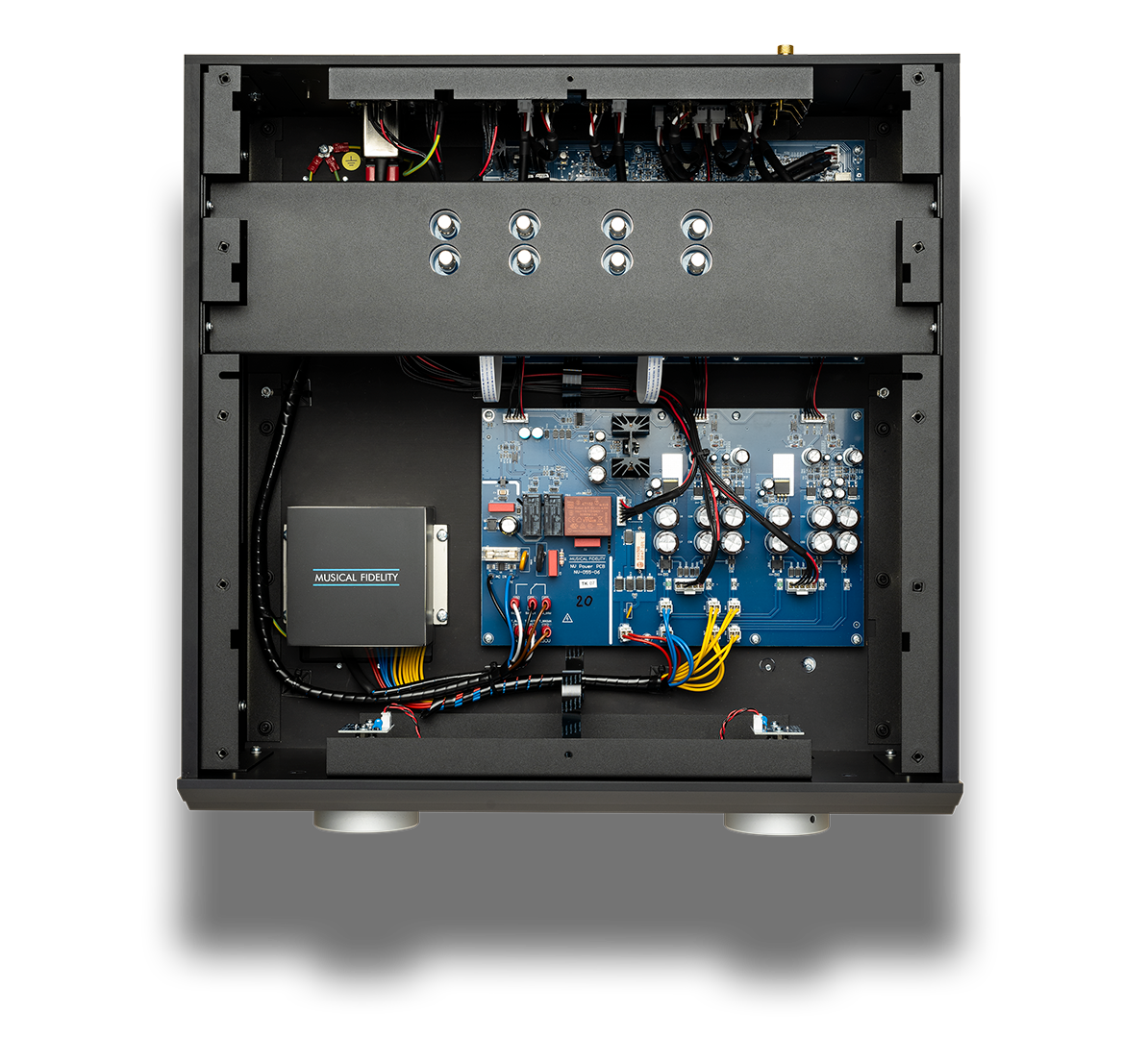
Optional upgrade: Nu-Vista Uni PSU
Optionally, the Nu-Vista Vinyl 2 can be powered by the Nu-Vista Uni PSU (set to be released in 2024). This will achieve better noise performance, by moving the AC mains power supply from the main unit and build it into another matching box. We are taking advantage of the extra space to set up mains and output filtering a step above what is usually possible in one-box-solutions. This quietens up the supplies and results in almost no mains-borne artefacts getting into the sensitive audio circuitry.

Heroic Build Quality
Like all Nu-Vistas, their mechanical construction is uncompromisingly rigid and solid in typical Musical Fidelity tradition. Front panel and side panels are milled from extruded aluminium profiles and are extremely massive. The Nu-Vista Vinyl 2 is basically immune against the effects of vibration from the environment. The same can be said about electromagnetic immunity. The massive aluminium case acts as a Faraday cage. It protects the incredibly sensitive phono stage internals against outer electromagnetic fields. Also included is the Nu-Vista remote control which is a solid “Nu-Vista” style re-imagination of usual remote controls. Machined from solid, it has the same feel as front panel of unit, has powerful beam, and runs off easily replaceable AAA Batteries.
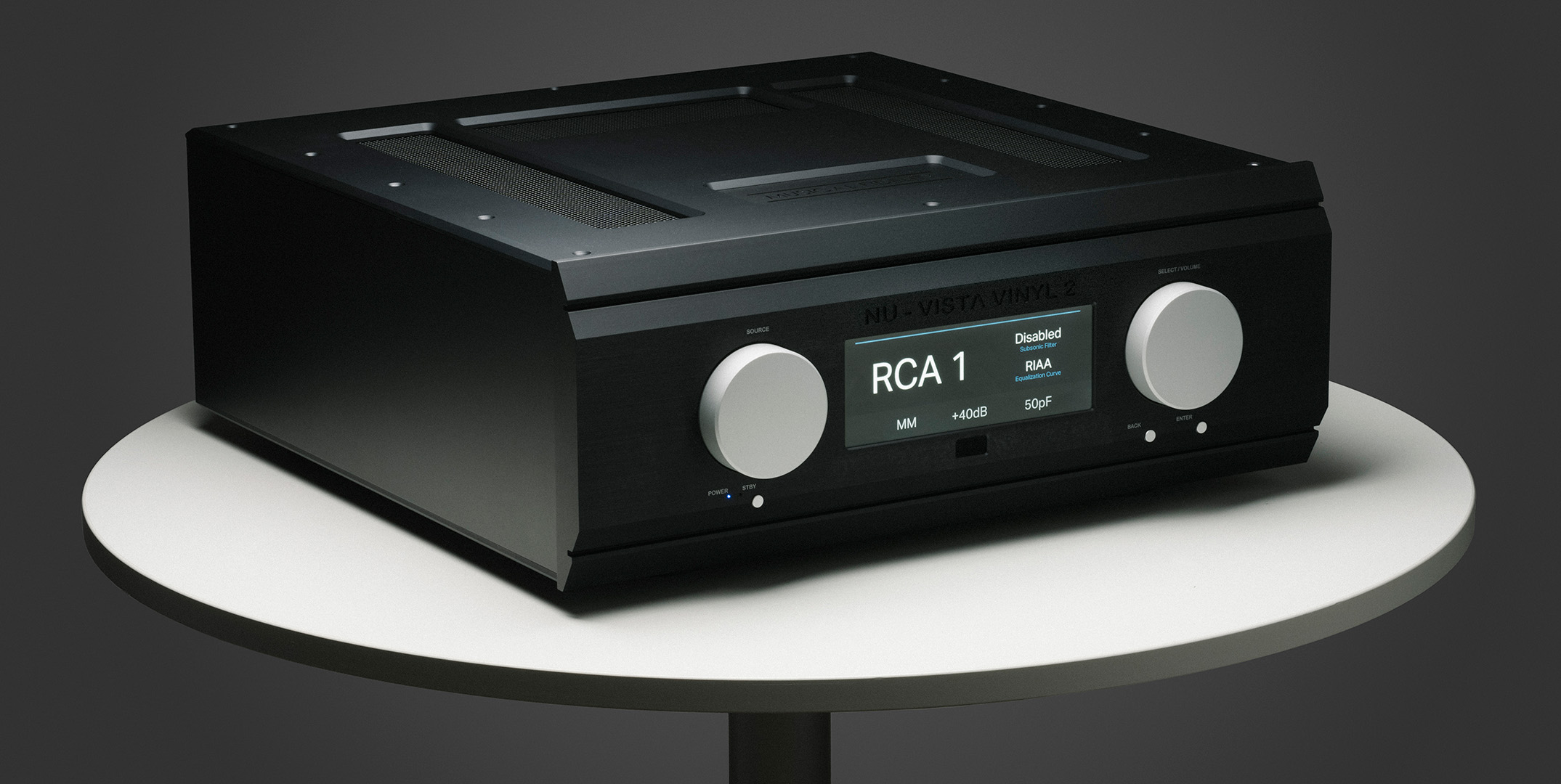
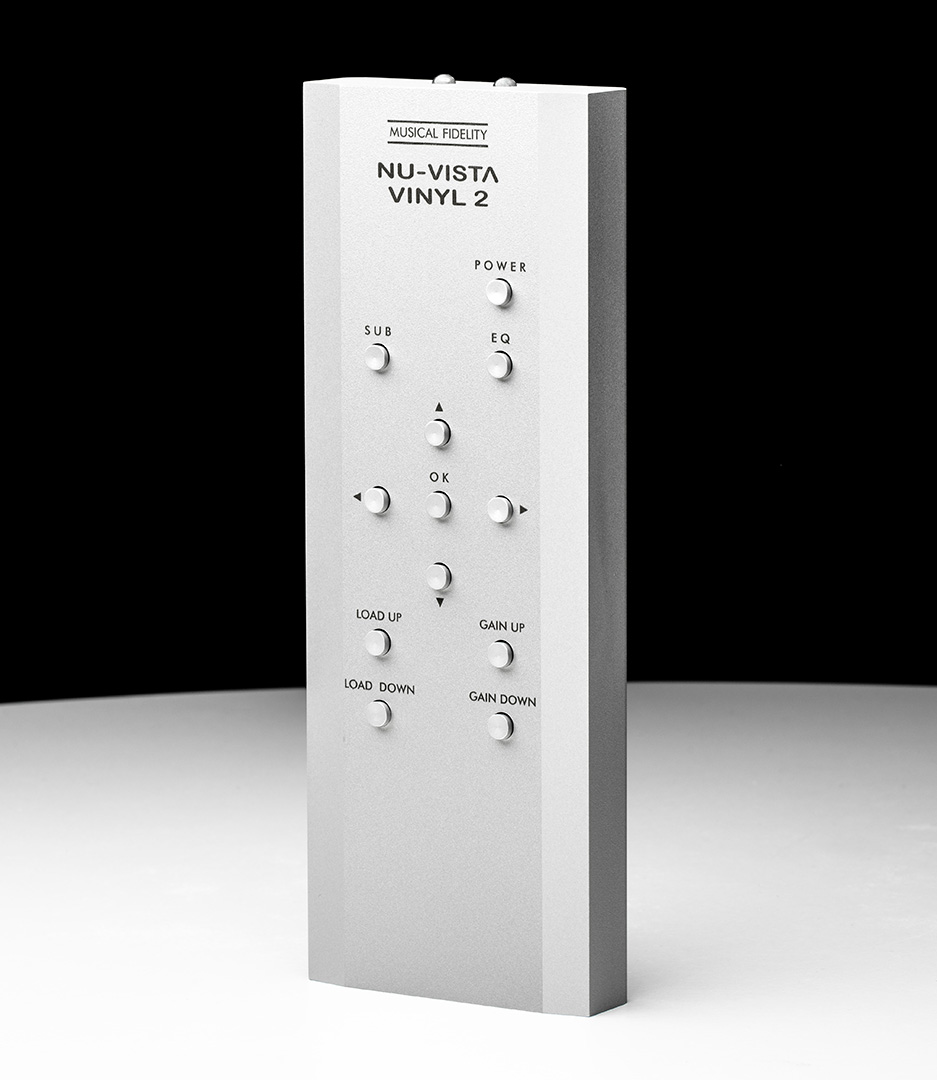
Nu-Vista by Musical Fidelity
The Nu-Vista family is a continued labour of love for Musical Fidelity. The brilliant Nuvistor tube never really went anywhere in audio. Until the early 1990‘s when Antony Michaelson and his small company named Musical Fidelity - back then located to the west of London in an artisan hamlet named Wembley - started making amplifiers with Nuvistors. They were made in limited editions and sold out almost immediately. To this day these icons of audio individualism are still highly valued. Now, after Musical Fidelity has been passed on to new ownership, our vision is to continue making history. The Nu-Vista Vinyl 2 will be no exception. We hope you derive as much pleasure listening to it, as we had creating it.

Nu-Vista Vinyl 2 In Brief
- Fully balanced and discrete design
- 3-part gain stage with Class A circuitry
- Split-passive RIAA, DECCA & COLUMBIA equalisation
- Two-step subsonic filter (Switchable: OFF – Mild – Standard)
- Low Noise Nu-Vista Class A circuitry
- 8x 7586 Nuvistors in balanced buffer circuit
- MM (40, 43dB) & MC (60, 63dB) capable with +6dB option for each gain setting
- Separate output and input stages - connect multiple inputs and ouputs simultaneously
- Super Silent Power Transformer
- Discrete input power filtering and DC blocking circuitry
- 2x RCA inputs
- 2x balanced XLR input
- 1x RCA output
- 1x balanced XLR output
- Optional connection for external Nu-Vista Uni PSU (sold separately)
- Colour display with loading settings and clear selected input
- Load settings stored for each input
- Dimmable display
- Nu-Vista Remote Control “Front panel in your hand”
Nuvistor Tubes
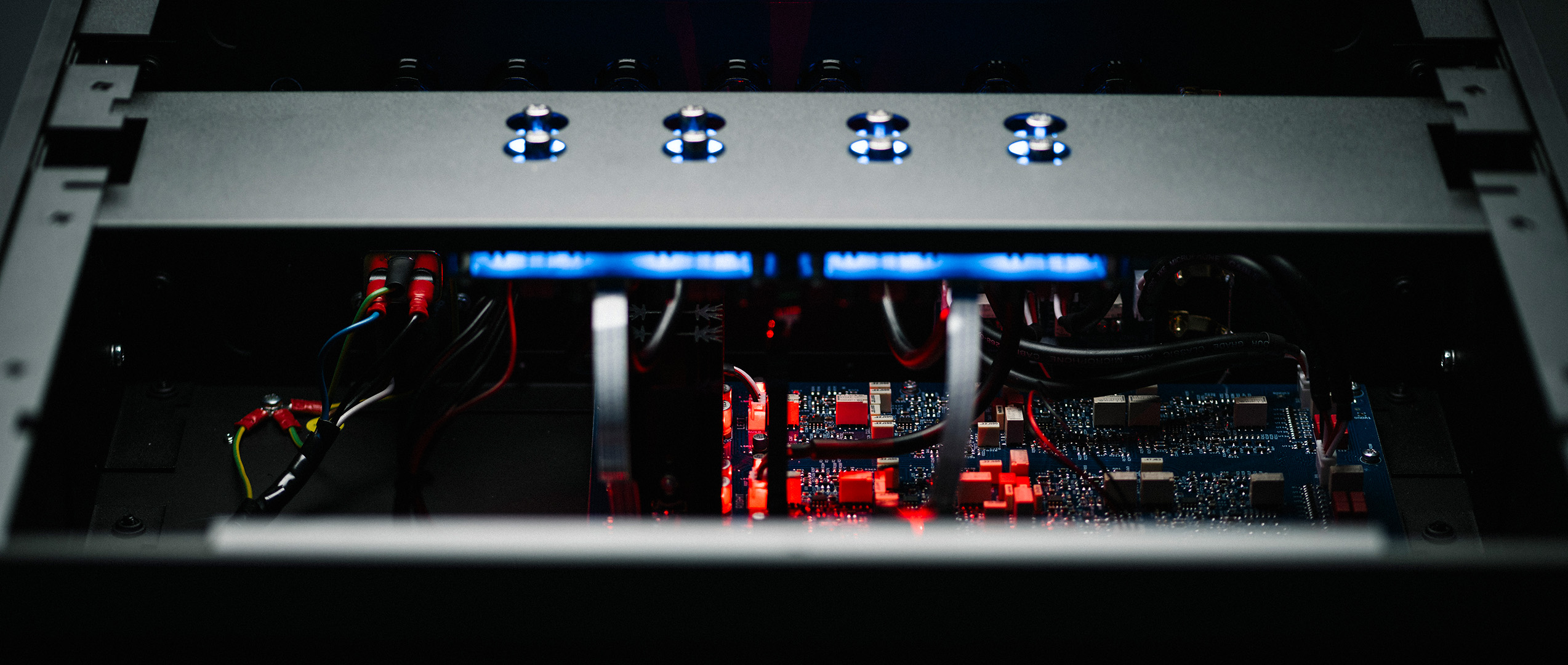
Nuvistor tubes were invented in the 1950s to solve the many shortcomings of conventional tubes. Unlike them, Nuvistor tubes offer very high reliability, low microphony, low noise, consistency from batch to batch, small size, relatively low power consumption and great technical performance.
One famous application was in the Ampex MR-70, a costly studio tape recorder whose entire electronics section was based on nuvistors. Another limited application of this very small tube was in studio-grade microphones from that era, the AKG/Norelco C12a, which employed the 7586, being a good example.
It was also later found in the famed Neumann U 47 studio microphone. This microphone was highly regarded by artists all over the world, and was used by many top recording artists such as Frank Sinatra, The Beatles, and so on. Remarkably, you can currently see a U47 microphone, with its stand, cables and power supply on eBay for $10.999 „Buy-it-now“.
Unfortunately just as uses for Nuvistor tubes were being explored, the transistor was invented and it was ‘game over’ for Nuvistors. There the matter rested until about fifteen years ago, when Musical Fidelity created the first of its ground-breaking Nu-Vista series. These legendary, limited-edition products sold out in a matter of months. Today, fifteen years later, they command very high secondhand prices because of their beautiful sound, build quality, and longevity.
Nu-Vista Vinyl 2 - Specifications
MM
- Gain at XLR outputs: 40dB, 43dB, 46dB, 49dB
- Frequency response: +0.2dB, -0.2dB
- Input sensitivity: 5mV IN for 500mV OUT (at 40dB, 1kHz)
- Intut impedance: 47kohm
- Input capacitance: 50-400pF selectable
- THD at 1kHz: <0.005%
- Overload Margin: 32dB
- Signal to noise ratio: >110dB „A“-wt. at 40dB
MC
- Gain at XLR outputs: 60dB, 63dB, 66dB, 69dB
- Frequency response: +0.2dB, -0.25dB
- Input sensitivity: 500uV IN for 500mV OUT (at 60dB, 1kHz)
- Intut impedance: 5 ohm to 47kohm selectable
- Input capacitance: 400pF fixed
- THD at 1kHz: <0.008%
- Overload Margin: 32dB
- Signal to noise ratio: >98dB „A“-wt. at 60dB
Features
- EQ curves: RIAA, DECCA, COLUMBIA
- Subsonic filters: off, mild (IEC), standard (at 20Hz with 18dB/octave)
In & Outputs
- Inputs: 2x RCA, 2x XLR
- 1x RCA output: unbalanced, left and right 500mV nom, 10V max
- 1x XLR output: balanced, left and right 1V nom, 20V max
Power requirement
- Mains voltages: 115/230VAC 50/60Hz (factory pre-set); 100VAC 50/60Hz (alternative)
- Consumption: 40 Watts maximum, <0.5 W in standby (orange LED ON)
General Information
- Dimensions (WxHxD): 483 x 188 x 510 mm
- Power connections for optional Nu-Vista Uni PSU (sold separately)
- Weight: 22 kg net / 30 kg in shipping box
